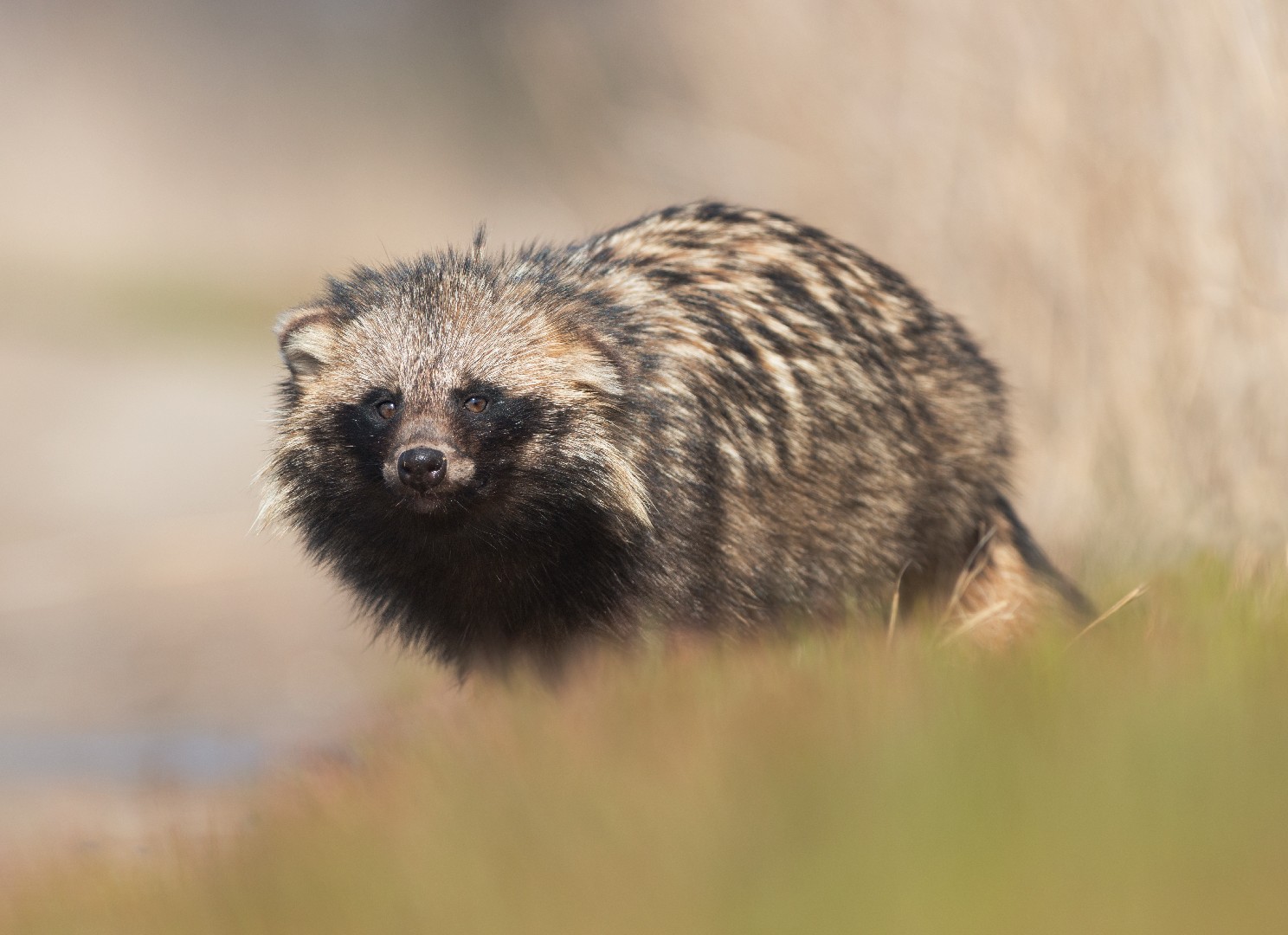Raccoon dog
A species of Raccoon dog, Also known as Asian raccoon Scientific name : Nyctereutes procyonoides Genus : Raccoon dog
Raccoon dog, A species of Raccoon dog
Also known as:
Asian raccoon
Scientific name: Nyctereutes procyonoides
Genus: Raccoon dog
Content
Description General Info
 Photo By Ryzhkov Sergey , used under CC-BY-SA-4.0 /Cropped and compressed from original
Photo By Ryzhkov Sergey , used under CC-BY-SA-4.0 /Cropped and compressed from original Description
Raccoon dog skulls greatly resemble those of South American foxes, particularly crab-eating foxes, though genetic studies reveal they are not closely related. Their skulls are small, but sturdily built and moderately elongated, with narrow zygomatic arches. The projections of the skull are well developed, the sagittal crest being particularly prominent in old animals. In reflection of their omnivorous diets, raccoon dogs have small and weak canines and carnassials, flat molars, and relatively long intestines (1.5–2.0 times longer than other canids). They have long torsos and short legs. Total lengths can range from 45 to 71 cm (18 to 28 in). The tail, at 12 to 18 cm (4.7 to 7.1 in) long, is short, amounting to less than a third of the animal's total length and hangs below the tarsal joints without touching the ground. The ears are short and protrude only slightly from the fur. Weights fluctuate according to season: in March they weigh 3 kg (6.6 lb), while in August to early September males average 6.5–7 kg (14–15 lb), with some individuals attaining a maximal weight of 9–10 kg (20–22 lb). Specimens from Japanese and Russian studies have been shown to be on average larger than those from Chinese studies. The winter fur is long and thick with dense underfur and coarse guard hairs measuring 120 mm in length. The winter fur protects raccoon dogs from low temperatures ranging down to −20° to −25°C. It is of a dirty, earth-brown, or brownish-grey colour with black guard hairs. The tail is darker than the torso. A dark stripe is present on the back, which broadens on the shoulders, forming a cross shape. The abdomen is yellowish-brown, while the chest is dark brown or blackish. The muzzle is covered in short hair, which increases in length and quantity behind the eyes. The cheeks are coated with long, whisker-like hairs. The summer fur is brighter and reddish-straw coloured. A rare, white color phase occurs in this species in Japan and in China. Fur colouring, in particular the facial mask, and habits of the raccoon dog, for example a nocturnal yet adjustable daily schedule, which reacts to availability of food locally, bear some similarities to those of raccoons and a number of other small carnivores to which it is not closely related. This includes viverrids, ferrets, weasels, raccoons and red pandas. 
General Info
Lifespan
5-8 years
Diet
Raccoon dog is an omnivorous feeder, with its diet spanning from insects and small mammals to fruits and seeds. It shows a particular fondness for rodents and bird eggs, tracing food through scent tracking.
Appearance
Raccoon dog is a medium-sized mammal with a chunky body shape and dense fur. Its coat is generally multicolored, dominated by hues of yellowish-brown, black, and white. A notable feature includes its bushy, banded tail. The facial area has a mask-like marking, which is typically darker. Among different genders and ages, there is little variation in appearance.
Behavior
Raccoon dog is a primarily nocturnal species, known for its rooting-style foraging behavior in search of omnivorous diet. This adaptable mammal tends to be solitary outside of breeding season, with territories often overlapping. It exhibits an array of vocalizations to communicate and employs defecation and scent-marking as territorial behaviors.
Population
Stable